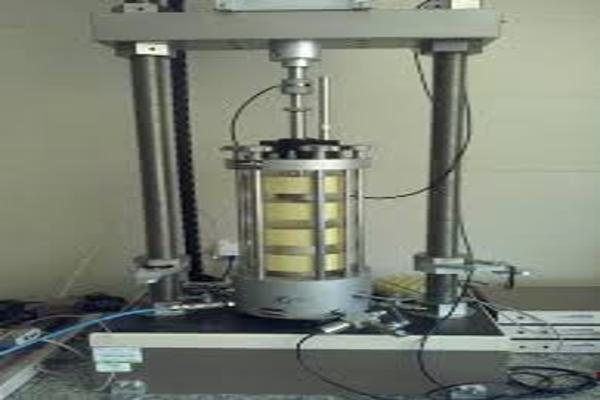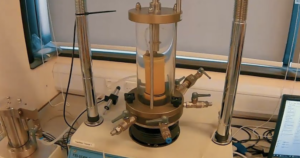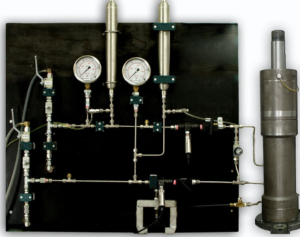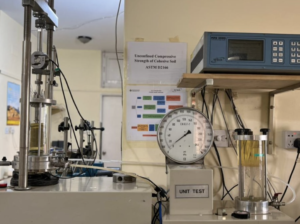Can Machine Learning Algorithms Enhance the Analysis of Triaxial Test Data and Prediction of Soil Behavior?
Advances in machine learning1 (ML) are opening up new opportunities in geotechnical engineering. ML algorithms can process complex triaxial test data2, extract key features, and build predictive models3 that help engineers understand and forecast soil behavior more accurately. In this article, we explore how ML can enhance the analysis of triaxial test data and improve predictions of soil strength and deformation.
Feature Extraction from Triaxial Data with ML
Machine learning excels at extracting meaningful features from large, multidimensional datasets. In the context of triaxial tests4, ML can:
- Identify Patterns: Detect trends in stress–strain curves5, pore pressure development, and deformation history.
- Automate Data Preprocessing: Clean and normalize raw data, handle noise, and automatically segment different test phases (e.g., consolidation, shearing).
- Derive Hidden Parameters: Extract latent features such as rate-dependent behaviors or microstructural indicators that may not be obvious through traditional analysis.
For instance, a convolutional neural network (CNN)6 can be trained on stress–strain images to automatically identify subtle changes that correlate with soil failure. This automated feature extraction reduces human error and speeds up data analysis.

ML-based Prediction Models for Soil Strength
By leveraging historical triaxial test data, machine learning models can predict key soil strength parameters:
- Regression Models: Techniques like support vector regression (SVR) or random forests can forecast undrained shear strength or effective friction angles (φ′) based on input variables such as moisture content, density, and strain rates.
- Neural Networks: Deep learning models can capture nonlinear relationships in the data, providing accurate predictions of soil behavior under different loading conditions.
- Ensemble Methods: Combining multiple ML algorithms often results in higher prediction accuracy and robustness, allowing engineers to estimate the performance of soils even under variable field conditions.
Experimental studies have shown that ML models can reduce prediction error by up to 20% compared to traditional empirical methods, making them a powerful tool for optimizing foundation and slope design.

Improving Data Interpretation Using ML in Triaxial Tests
ML not only predicts soil strength but also enhances overall data interpretation:
- Pattern Recognition7: Unsupervised learning techniques (e.g., clustering) can identify distinct soil behavior patterns, revealing differences in test responses due to soil heterogeneity.
- Anomaly Detection: ML algorithms can flag unusual test results or instrument errors, ensuring data quality before it is used in design calculations.
- Real-Time Analysis8: By continuously analyzing data as it is collected, ML systems can provide immediate insights and adjustments, improving the reliability of test outcomes.
For example, principal component analysis (PCA) can reduce the dimensionality of triaxial test datasets, highlighting the most influential variables in soil failure. This refined interpretation aids engineers in making more informed decisions.

ML-enabled Real-time Monitoring of Triaxial Test Results
One of the most exciting applications of ML is in real-time monitoring:
- Instant Feedback: Integrating ML with data acquisition systems allows for real-time analysis of triaxial test results, instantly identifying trends and deviations.
- Adaptive Testing Protocols: ML algorithms can adjust test parameters on the fly, such as modifying the loading rate based on preliminary stress-strain behavior, to capture critical transition points more accurately.
- Predictive Maintenance: Real-time monitoring helps detect equipment anomalies and prevent test interruptions, ensuring continuous, reliable data collection.
With these advancements, engineers can monitor tests dynamically, making on-the-spot decisions that improve test quality and safety. Real-time ML systems also facilitate faster turnaround times for complex projects, integrating seamlessly with digital lab management systems.

Conclusion
Machine learning algorithms are transforming the analysis of triaxial test data by automating feature extraction, enhancing predictive models for soil strength, and improving data interpretation. Additionally, ML-enabled real-time monitoring systems allow for dynamic adjustments during testing, leading to more reliable and efficient geotechnical evaluations. As these technologies continue to evolve, they hold significant promise for advancing the design and safety of geotechnical engineering projects.
-
Explore how machine learning is revolutionizing geotechnical engineering and enhancing predictive accuracy in soil behavior. ↩
-
Learn about innovative methods for analyzing triaxial test data with machine learning to improve soil strength predictions. ↩
-
Discover the advantages of predictive models in geotechnical engineering and their impact on soil behavior forecasting. ↩
-
Understanding triaxial tests is crucial for grasping how ML can enhance data analysis in geotechnical engineering. ↩
-
Exploring the relationship between stress–strain curves and ML can provide insights into predictive modeling in soil mechanics. ↩
-
Learning about CNNs will help you understand their role in automating feature extraction and improving analysis accuracy. ↩
-
Explore how Pattern Recognition can enhance soil analysis and improve decision-making in engineering projects. ↩
-
Discover how Real-Time Analysis can provide immediate insights, enhancing the reliability of soil test outcomes. ↩







